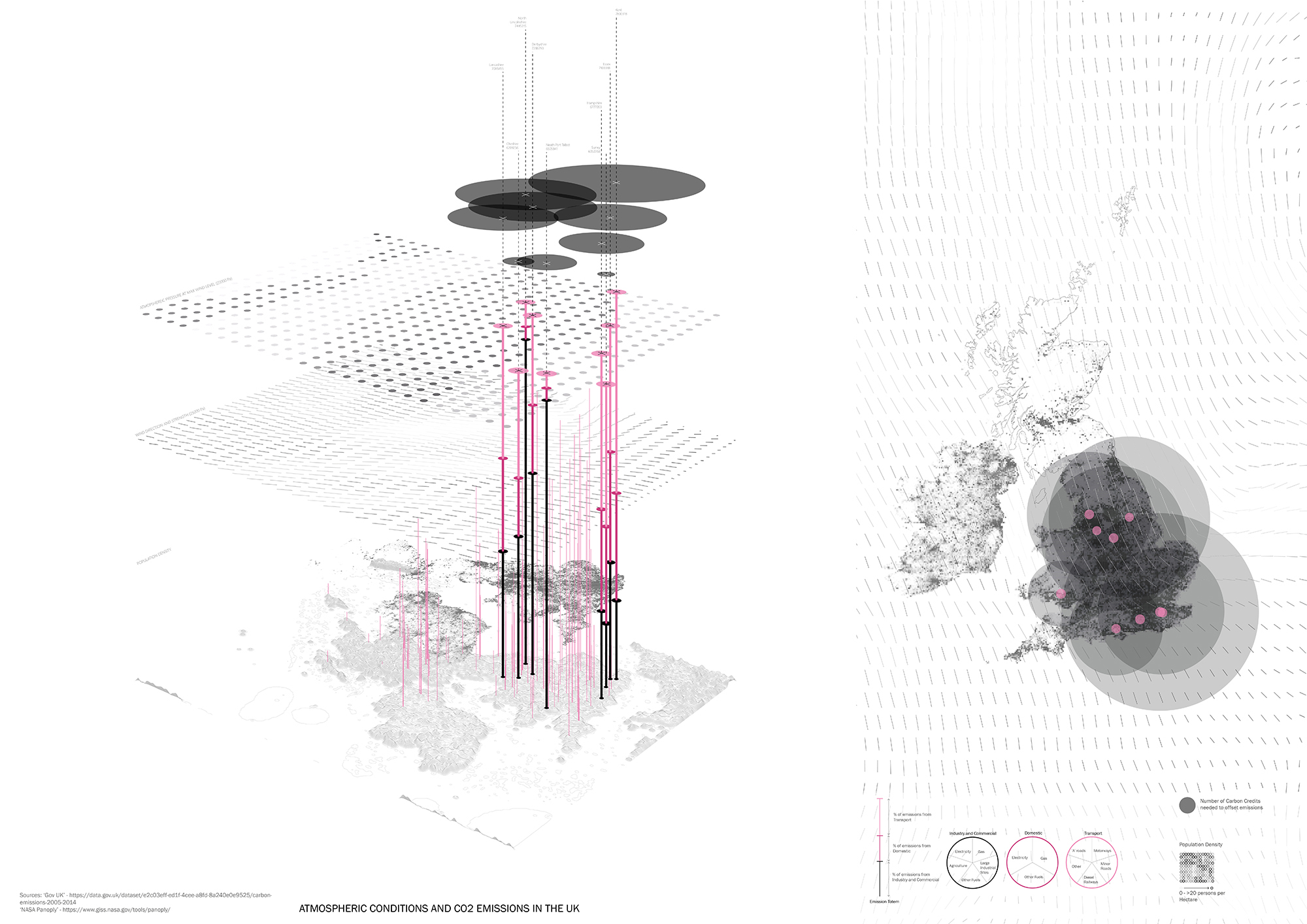Air, Architecture + Other Climates
[50.0°to 61.0° N : United Kingdom] : Carbon Transitions- 2020/21
John Cook, Ben Pollock + Laura Nica
︎︎︎ Home
︎︎︎ Previous // Next ︎︎︎
Elizabeth Terry
![The New Caledonian Carbon Forest]() A Carbon Re-wilding: Decolonisation of Contentious Territories
A Carbon Re-wilding: Decolonisation of Contentious Territories

The Old Caledonian
Memorial & Carbon Monitoring Station
Balmoral, The Crown Estate, Scotland
The Global North, and the richest top 1% of the population, cause double the CO2 emissions of the poorest countries in the Global South (Oxfam), there is little empirical evidence indicating this slowing to levels needed by 2030 and 2050. Within this inequitable anthropogenic carbon system, the ‘Carbon Credit’ is a market fabrication tool giving those who can afford it, the right to emit, which can be subsequently and retrospectively bought or traded. Offsetting schemes and trading provide a contradictory loop of potentially never ending emissions in the Global North and a false horizon of Net-Zero; there is an enormous local deficit of carbon, between what is emitted and absorbed/captured. In the UK, the government sets out a speculative agenda of capturing up to 10 million tonnes of carbon a year from 2023. This seemingly high figure represents only 2.7% of the total carbon emissions from 2018, an astonishingly low amount. This framing drives my research and proposal of the Carbon Re-wilding Revolution; a decolonisation lead process of converting contentious territories owned by the Crown Estate (800,000 acres) and other privately owned land into land for carbon capture and natural regeneration.
The Old Caledonian Memorial & Carbon Monitoring Station sits at the centre point of the re-wilded landscape of the Crown’s largest estate, Balmoral. The architecture promotes a symbolic gesture to the vulnerable, prehistoric ‘Old Caledonian’ forest of Scotland as well as various wood facilities that record, monitor, preserve and promote the optimum tree species, based on their carbon absorption abilities and future climates.








